Sandra Polleys Knitted Toys  Sandra Polleys
Sandra Polleys
Knitted Toys
Animals, dolls and teddies for all ages


Contents
Introduction

I hope if you are reading this it is because you love knitting and especially knitted toys. Being a bit lazy, I like a hobby that I can do sitting on my sofa. I might spread out a bit but when Ive had enough it only takes a few minutes to put it all in a little bag. Thats the great thing about knitting toys: its relaxing, theres not much mess, it doesnt take too long, and hopefully theres something at the end of it that someone will actually want. I have always loved craftwork, especially toy making. There is a feeling of creating a life, a little character, from just scraps of yarn or fabric, which if loved by a child will be given a name and a personality, perhaps even quite a long life.
So I have enjoyed making all of these different characters. Some were easier than others to design it was difficult deciding how far to go with the glove puppets, and I thought I would never get the meerkat pattern finished. As with many people, though, I adore meerkats and just had to make one. I didnt want to give them the indignity of too many clothes, so they have only what they can find on their travels around the desert. I hope they will appeal to both adults and children. They can be made smaller than the two sizes given by adjusting yarn and knitting needles for example, I once made some very small ones as gifts for adult meerkat lovers using 3ply yarn and 2mm needles.
The idea for the glove puppets was a combination of my love of animals and wanting to make something for interactive play with my grandson Jack. The puppets can pick things up with their hands, including their own miniature baby. Each baby has a sleeping bag or blanket, so that the adult puppet can put the baby to bed. Before you begin to knit any of the patterns, do take a few minutes to read the general instructions. Much of it you may already know, but it will help you to understand some of my peculiarities in toy making and also saves space by not having to repeat things for every pattern. All of the patterns are easy to follow, with no complicated stitches or designs, and many can be made from quite small amounts of yarn.
The clothes have also been kept to a simple design and are quick and easy to knit. The reindeer and elves are perfect for decorating a Christmas tree, and the miniature dolls and little bears such as Harriet and Brian can be quickly made for last-minute gifts or stocking fillers. I hope you enjoy making these little characters and that they are loved by children young and old. I especially hope that you find knitting one relaxing, and that you like your finished toy and look forward to making another one. Sandra Polley
Materials
Yarn All of the yarn used to make the toys in this book was relatively cheap and is widely available, both in shops and online. So many places sell yarn and haberdashery items nowadays, not just specialist yarn shops there is even a nice selection in my local chemist.
Yarn with a high wool content is not really suitable for these small toys, other than perhaps Jim and the babys first teddy. The edges of the knitted pieces would curl in too much and make the projects, especially the small ones, difficult to sew up. Knitting needles There are not many different sizes of knitting needles used in this book. Most of the projects worked in DK yarn are knitted with 3mm needles. I have used the size needle I thought the most appropriate but, if you know that your knitting tension is usually too tight or too loose, you can use a size larger or smaller needles as appropriate. If you are anything like me, you will have amassed a huge collection of needles over the years.
The needle size conversion table will help you to identify the right size for your pattern. Try to use shortish needles if you can none of the knitted pieces has long rows, so long needles might get in the way. Sewing needles Needles for sewing knitted pieces together have a blunt point to prevent them from splitting the yarn and a large eye to thread the thick yarn through. They are generally called tapestry, yarn or knitters needles and they are available in many different sizes. A medium size, either No. 18 or 20, is about right for sewing up DK and 4ply toys.
You will also need a household sewing needle for sewing facial features, attaching press fasteners and a few other little bits. Sewing thread You will need some embroidery thread, mostly black or brown, for sewing noses. You could use yarn but it would be a bit thick for most of the toys. You will also need a household sewing thread for attaching press fasteners and buttons, and some extra-strong black thread for sewing on bead eyes. I also use it for making mouse whiskers. Stuffing Years ago, teddy bears were stuffed with straw, wood, wool, kapok and so on, and during the war years, old bits of rags and clothes.
Nowadays you can buy good-quality toy filling from haberdashers and craft shops. This stuffing is clean, light, relatively cheap and easy to use. It will also have been tested for fire resistance. Another good source of stuffing can be found in new polyester quilts and pillows. You can buy inexpensive ones in many supermarkets and they will also have a safety standard mark, which means the stuffing will be fire resistant. Foam chips are no good for making small toys because they will make the toys lumpy as well as being difficult and messy to use.
Forceps or tweezers These are very useful pieces of equipment and are essential when making Duncan, the miniature bear, and the glove puppet babies. They are used to help to turn the finished pieces the right way out after sewing up and also to grip and insert small amounts of stuffing into all the tiny spaces. Veterinary forceps are better than tweezers as they are slightly curved and have a locking ratchet. If you visit your local veterinary centre, they might be willing to order you a pair. Vetrerinary forceps are inexpensive and should last many years. Pins You should always use coloured plastic-headed pins for knitted toys as they can be easily seen and are not so likely to slip through and get lost in the knitting.
Black-headed ones are very useful for trying out eye positions. Stitch Holders On some of the patterns you will need to put some stitches on a holder while knitting other pieces. A small safety pin is ideal for this or you can thread a length of differently coloured yarn onto a sewing up needle, thread it through the stitches to be held, knot and then pull it out when you have finished with it. Scissors A sharp pair of embroidery scissors are best to snip off threads. My favourites are the little plastic-handled, stainless steel ones you often see in supermarkets. Tape measure Although most of the instructions state the number of rows to knit, there are occasionally pieces of work to measure.
Pencil A pencil is useful for marking where you are on the pattern as you go along or if you get disturbed. You can then erase the marks afterwards. Eyes Some of the eyes for these toys are embroidered. These are the safest eyes to use if the toy is for young children. Jim, Oscar and the glove puppets have plastic safety eyes. As the eyes I have used are a medium size, they are safe for older children because they are not small enough to slip out of the stitches and, if fixed in properly, they are almost impossible to pull out.
Next page
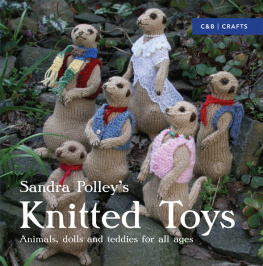
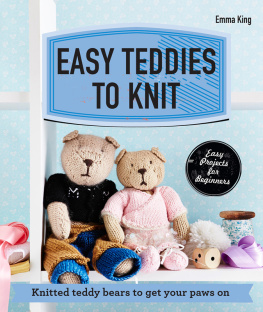
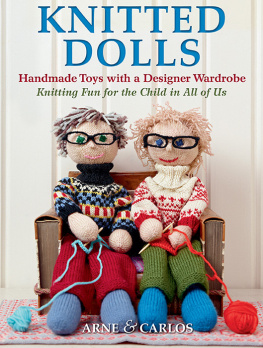
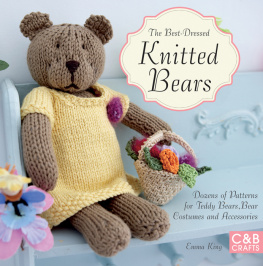
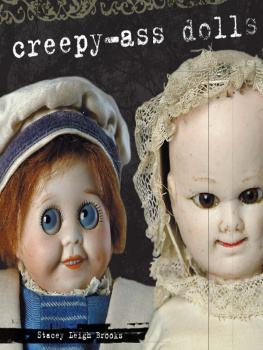

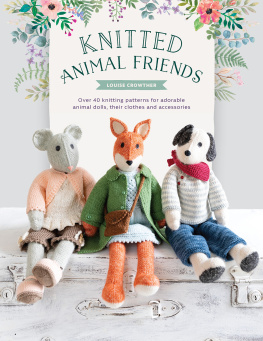

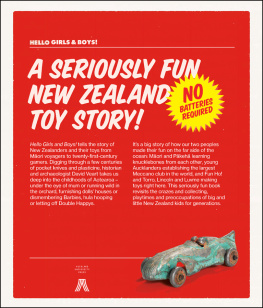
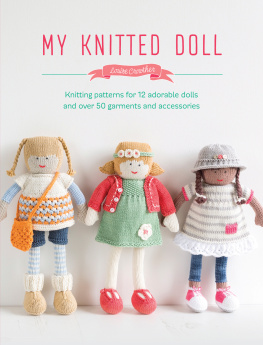
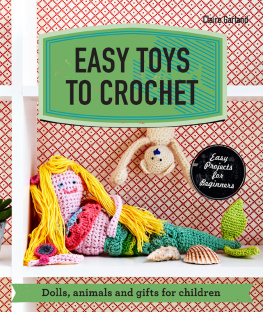

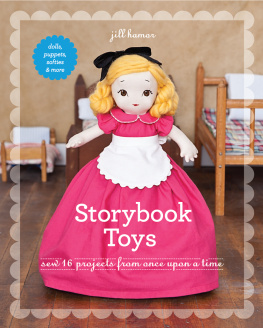
 Sandra Polleys
Sandra Polleys

 I hope if you are reading this it is because you love knitting and especially knitted toys. Being a bit lazy, I like a hobby that I can do sitting on my sofa. I might spread out a bit but when Ive had enough it only takes a few minutes to put it all in a little bag. Thats the great thing about knitting toys: its relaxing, theres not much mess, it doesnt take too long, and hopefully theres something at the end of it that someone will actually want. I have always loved craftwork, especially toy making. There is a feeling of creating a life, a little character, from just scraps of yarn or fabric, which if loved by a child will be given a name and a personality, perhaps even quite a long life.
I hope if you are reading this it is because you love knitting and especially knitted toys. Being a bit lazy, I like a hobby that I can do sitting on my sofa. I might spread out a bit but when Ive had enough it only takes a few minutes to put it all in a little bag. Thats the great thing about knitting toys: its relaxing, theres not much mess, it doesnt take too long, and hopefully theres something at the end of it that someone will actually want. I have always loved craftwork, especially toy making. There is a feeling of creating a life, a little character, from just scraps of yarn or fabric, which if loved by a child will be given a name and a personality, perhaps even quite a long life.